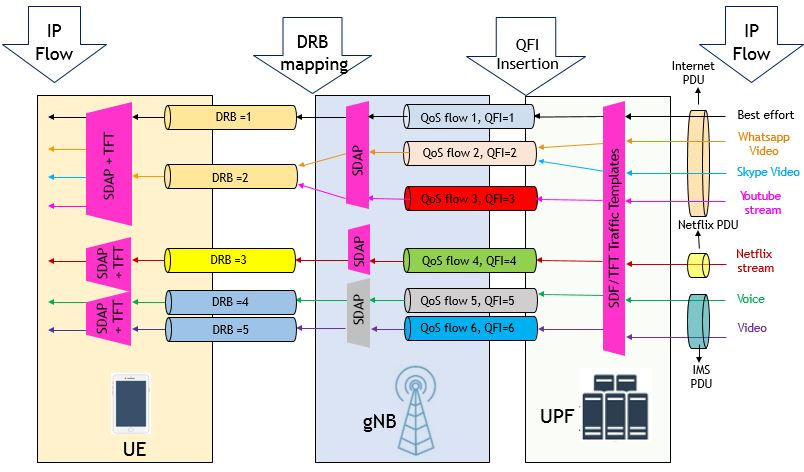I would like to know about a concrete use case in order to have multiple PDU sessions.
I cant image how the workflows happen.
I saw this image:
And I were curious about the IMS, Netflix PDU and Internet PDU sessions. Which network element are triggered when occur a session establishment requests in each case? and which network element is the owner of each PDU lifecycle? Thank you in advance!
Source of image:
1 Like
VoLTE/VoNR/IMS is one example of multiple PDU sessions; 1 with default/internet network and 1 with IMS network for voice calls.
Emergency services over 4G is another example; depending on type of services provisioned, a UE can have 3 PDU sessions; 1 with VoLTE, 1 with internet, 1 with Emergency Services
For 4G this is quite simple since generally (mostly) internet bound traffic (like Netflix, Amazon or other) is all mapped to default bearer.
For 5G, it will probably be the same in initial rollouts (i.e. internet bound traffic with same QFI) but it can change depending on core network configuration i.e. if different application have separate QFI enabled.
To answer your question (not 100% but my understanding):
Which network element are triggered when occur a session establishment requests in each case? It is likely going to be UPF only. There are not specific call flow for Netflix or Amazon-Video type services. Once UPF detects traffic as video-streaming (through deep packet inspection or IP-address lookup) it will switch QFI from default for QFI=4 (in above example). There will be some packets which will be send with default QFI
and which network element is the owner of each PDU lifecycle? Again UPF. Once it detects that packet flow has stopped it will tear down the bearer and release resources. Please note, that this is only true for on-demand type bearers. In case of IMS, a default bearer is always present for IMS Signalling (persistent bearer)_
1 Like
I read this for units responsible it’s SMF for PDU.
For multiple PDUu I think it’s scenario of network slicing where S-NSSAI come into picture.
Where multiple PDU per users for different service can be there.
We have concept of SST type in network slicing.
So this mapping need to defined in gNB.
Internet + ims / vonr.
Different qfi on same session, though for voice path.
